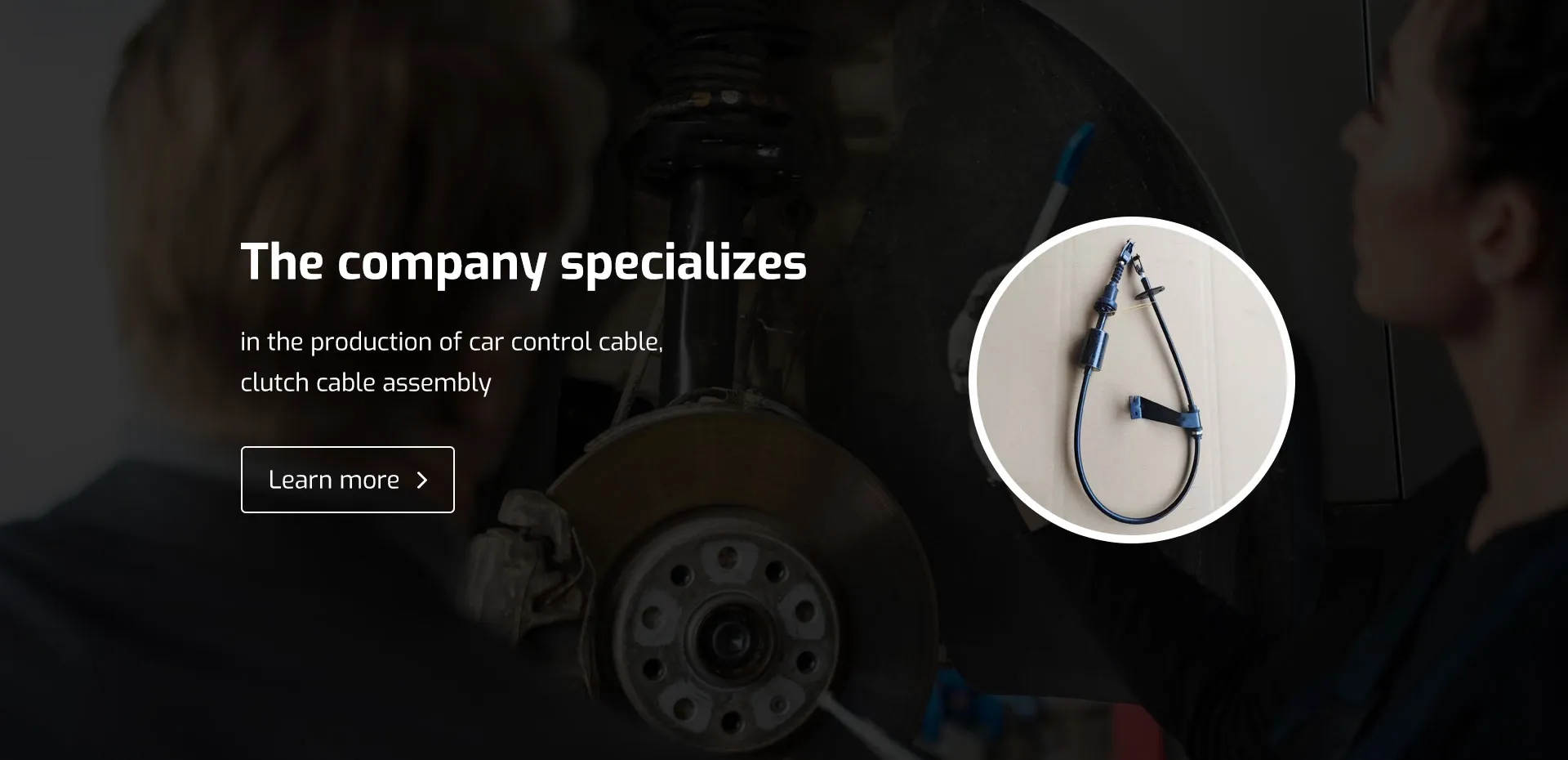throttle cable control
Understanding Throttle Cable Control A Key Component of Engine Performance
Throttle cable control is an essential aspect of modern vehicular and machinery design, playing a crucial role in how power is delivered to the engine and subsequently to the wheels. While we often take the smooth acceleration of our vehicles for granted, the underlying mechanics of throttle control are intricate and vital to ensuring performance, efficiency, and safety.
What is Throttle Cable Control?
At its core, throttle cable control refers to the system that connects the accelerator pedal to the throttle body in an internal combustion engine. The throttle body is responsible for regulating the amount of air entering the engine, which in turn influences the engine's power output. Traditional throttle systems use a physical cable—hence the name throttle cable—to establish a direct link between the driver’s input (pressing the accelerator) and the engine's responsiveness.
When a driver presses the accelerator pedal, the cable pulls on the throttle mechanism, allowing more air into the engine. This increase in air correlates to higher fuel intake, resulting in more power generated by combustion. The simplicity of this mechanical connection allows for immediate feedback and a more tactile driving experience. However, advancements in technology have introduced alternative systems, such as electronic throttle control (ETC), which replaces the cable with electronic sensors and motors for a more precise and flexible control.
The Mechanics of Throttle Cables
A typical throttle cable consists of a flexible outer casing and a steel inner wire. The outer casing is usually mounted in a way to remain stationary while the inner wire moves. This design ensures that when the driver presses the accelerator, the cable helps pull or release the throttle plate, adjusting the air-fuel mixture reaching the engine.
Over time, throttle cables can experience wear and tear. Factors such as friction, exposure to heat, and environmental conditions can affect their performance. Common symptoms of a malfunctioning throttle cable include sticky acceleration, delayed throttle response, or even complete failure to accelerate. For this reason, regular maintenance of the throttle cable is crucial to ensure reliable vehicle operation.
throttle cable control

Benefits of Throttle Cable Control
One of the primary benefits of throttle cable control is the direct, mechanical connection it provides between the driver and the vehicle. This arrangement fosters a sense of control and responsiveness, which is particularly appreciated in performance and racing scenarios where rapid adjustments can mean the difference between victory and defeat.
Additionally, throttle cable systems are typically more straightforward and less expensive to repair than their electronic counterparts. In regions with harsh climates or remote settings, the simplicity of a cable system can be advantageous, as they are generally more resilient to environmental challenges.
Shifting Trends From Cable to Electronic Control
Despite the advantages of traditional throttle cable systems, the automotive industry is gradually moving towards electronic throttle control systems. ETC offers several modern benefits including improved fuel efficiency, smoother acceleration, and compatibility with advanced driver-assistance systems (ADAS). For instance, electronic systems can easily integrate features like cruise control and traction management, enhancing overall vehicle dynamics.
However, the transition does not eliminate the need for understanding traditional throttle cable systems. Many older and performance-oriented vehicles still utilize these cables, requiring drivers and mechanics alike to have knowledge of their function, maintenance, and repair.
Conclusion
Throttle cable control is a fundamental technology that underscores the relationship between the driver and the engine. Understanding how this system works not only enhances driver awareness but also informs choices regarding vehicle maintenance and performance upgrades. As the industry evolves, embracing both traditional and modern approaches to throttle control will remain essential in optimizing vehicle performance and ensuring a thrilling and responsive driving experience.
-
Workings of Clutch Pipe and Hose SystemsNewsJun.04,2025
-
The Inner Workings of Hand Brake Cable SystemsNewsJun.04,2025
-
The Secrets of Throttle and Accelerator CablesNewsJun.04,2025
-
The Hidden Lifeline of Your Transmission Gear Shift CablesNewsJun.04,2025
-
Demystifying Gear Cables and Shift LinkagesNewsJun.04,2025
-
Decoding Clutch Line Systems A Comprehensive GuideNewsJun.04,2025
